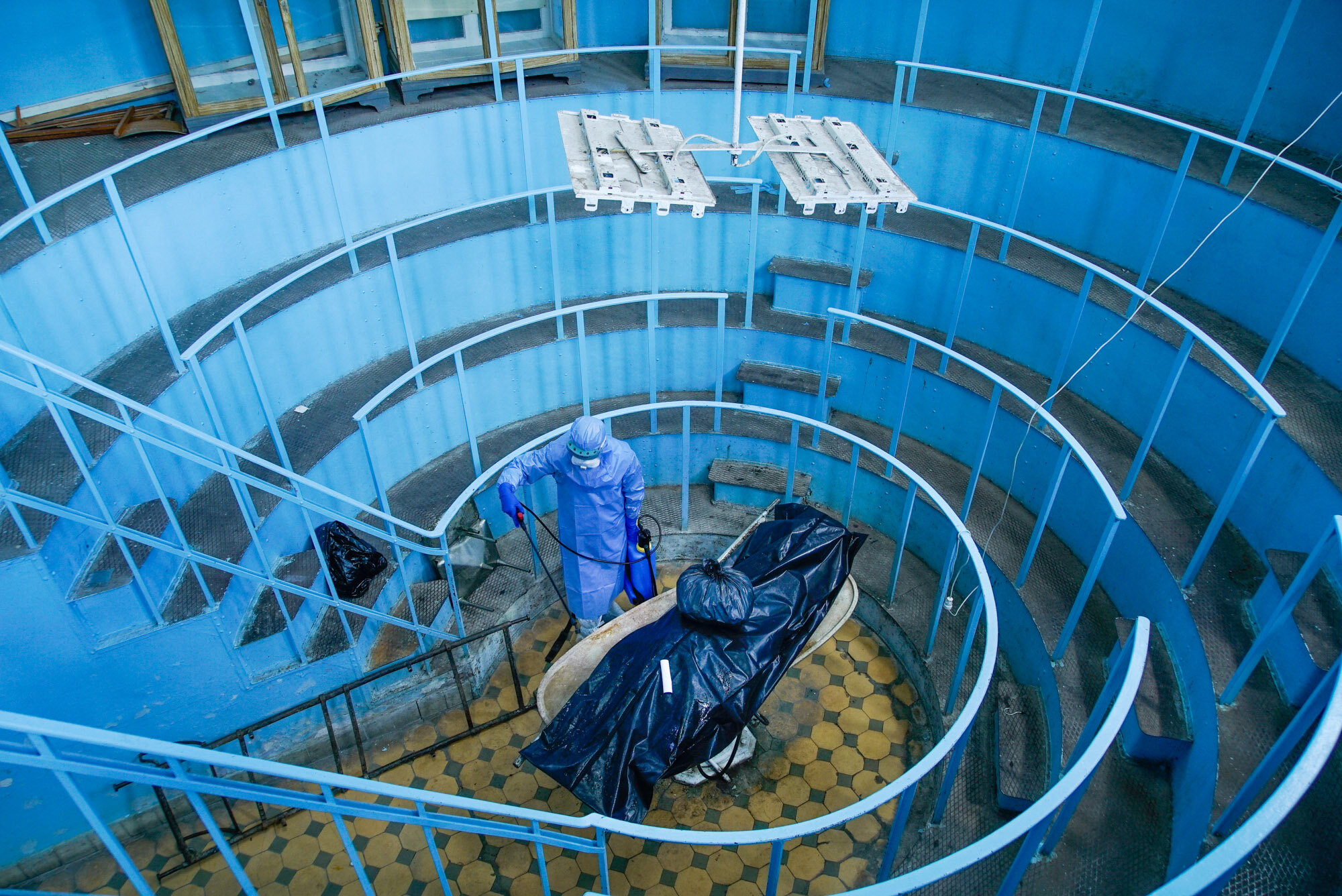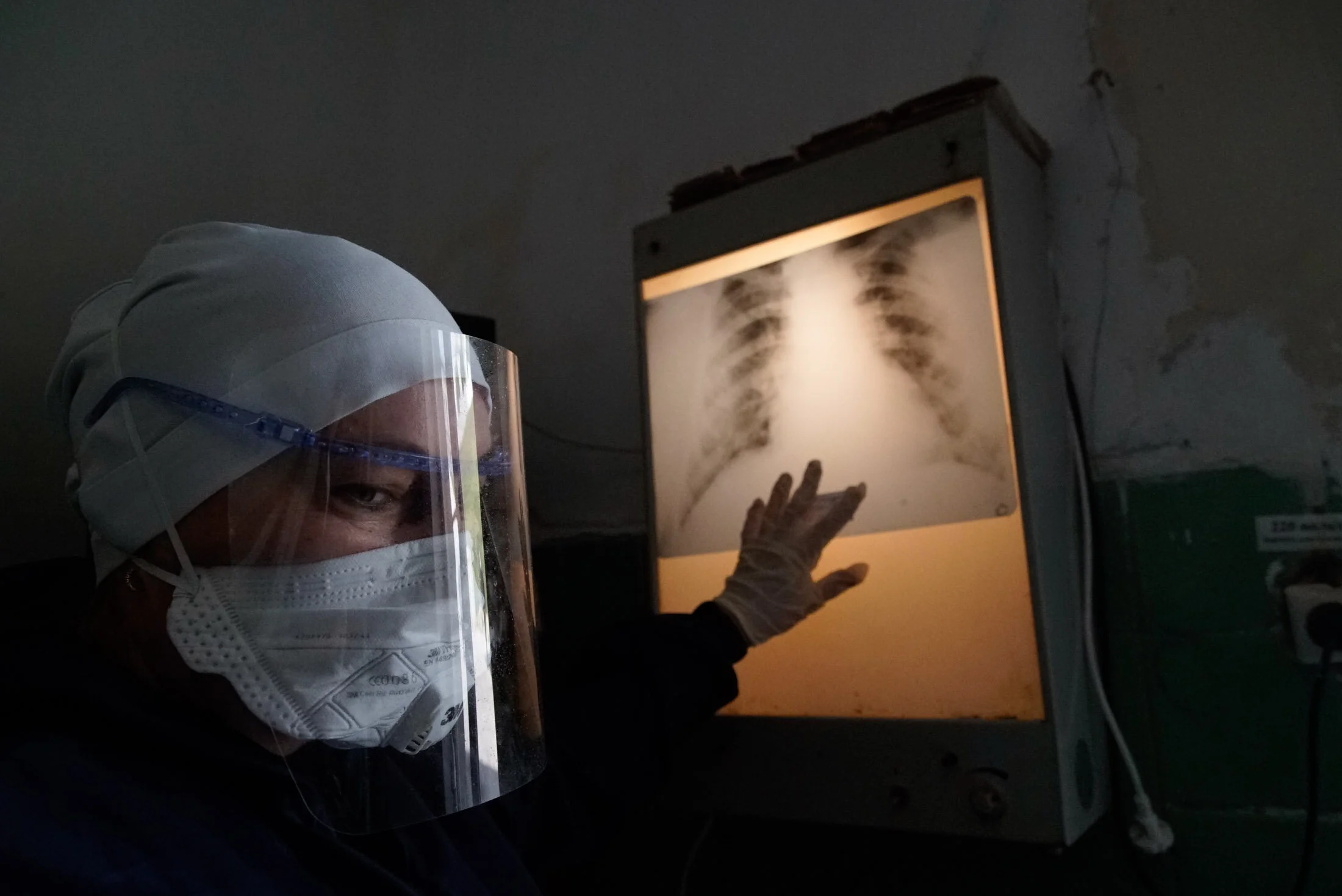
COVID-19 in Ukraine

COVID-19 in UKRAINE
Medical workers in homemade protective masks and suits, with plastic bags over their shoes. A hospital intended for 150 coronavirus patients now holding 250. A lack of filtration systems that forces autopsies to be done outside, under the trees, instead of in the hospital morgue.Ukraine's troubled health care system has been overwhelmed by COVID-19, even though it has reported a relatively low number of cases — 18, 000 infections and 519 deaths.


Nowhere is the problem more evident than in the western city of Chernivtsi, with 2,324 confirmed infections in the city and the surrounding region. It is considered a hot spot of contagion, along with another western city, Ivano-Frankivsk, 100 kilometers (60 miles) away, and the capital, Kyiv.
Thousands of Ukrainians who had temporary jobs in Europe have returned home amid the pandemic and some brought the virus back with them.

As COVID-19 patients flood into the struggling hospitals, some doctors and nurses must buy their own protective gear or use improvised equipment. Many of them are getting sick: medical workers account for about a fifth of all coronavirus cases in Ukraine.
There is not a hospital-grade ventilator for the 200 patients in the facility in Chernivtsi, a city of 266,000 people.


The crisis could not have struck at a worse time for Ukraine as ongoing health care reforms begun before President Zelensky took office have slashed government subsidies, leaving hospital workers underpaid and poorly equipped.
The health care reform also sought to replace the old rules that allowed patients to choose their own doctors and consult with specialists with a system empowering family doctors to direct patients to other experts. But the new system has failed to work properly amid the outbreak.


The country’s corruption-ridden economy has been drained by six years of war with Russia-backed separatists in the east, and the year-old administration of President Volodymyr Zelenskiy inherited health care reforms begun by his predecessor that are still rolling out. The reforms have slashed government subsidies, leaving hospital workers underpaid and poorly equipped.
“The coronavirus has shown what kind of medical reform it was — hospitals aren’t ready, there aren’t enough beds for infected patients, salaries are very low, medical infrastructure is missing,” Zelenskiy said. “We didn’t even have 1,000 ventilators in working condition in a country of over 40 million. It’s just a shame.”


Aware of the healthcare problems, authorities began a strict coronavirus lockdown on March 12, complete with police patrols and tight restrictions on using public transportation. Farmers, businessmen and others have been pushing authorities to ease the rules, while doctors fear that the easing it will lead to a new wave of contagion.
"Ukraine was completely unprepared for the epidemic, and it's a big question if it's ready now," said Dr. Oleh Stetsiuk, a pathologist in the western city of Ternopil.

The government used to subsidize things like wages for medical workers and hospital utility bills, but under a second stage of the reforms that began last month, there will be further cuts to of the already-limited state funding.


Under the new rules, the state doesn't fully cover the cost of treatment. It only pays the equivalent of $780 for treating a stroke patient, while experts estimate the cost at $2,000-$3,200.Limited state funds have resulted in low wages. ICU doctors have monthly salaries ranging from $148 to $174, while nurses get $111.




“Except for the medics — the excellent professionals who are among the best in the world — we have nothing else,” he said. The president hasn't specified how he could increase subsidies to the ailing health care sector in a cash-strapped country that badly depends on loans from the International Monetary Fund and other global lenders.


Zelenskiy has vowed to revise the reforms, saying that it otherwise could lead to the closure of more than 300 hospitals, leaving 50,000 medical workers jobless.
